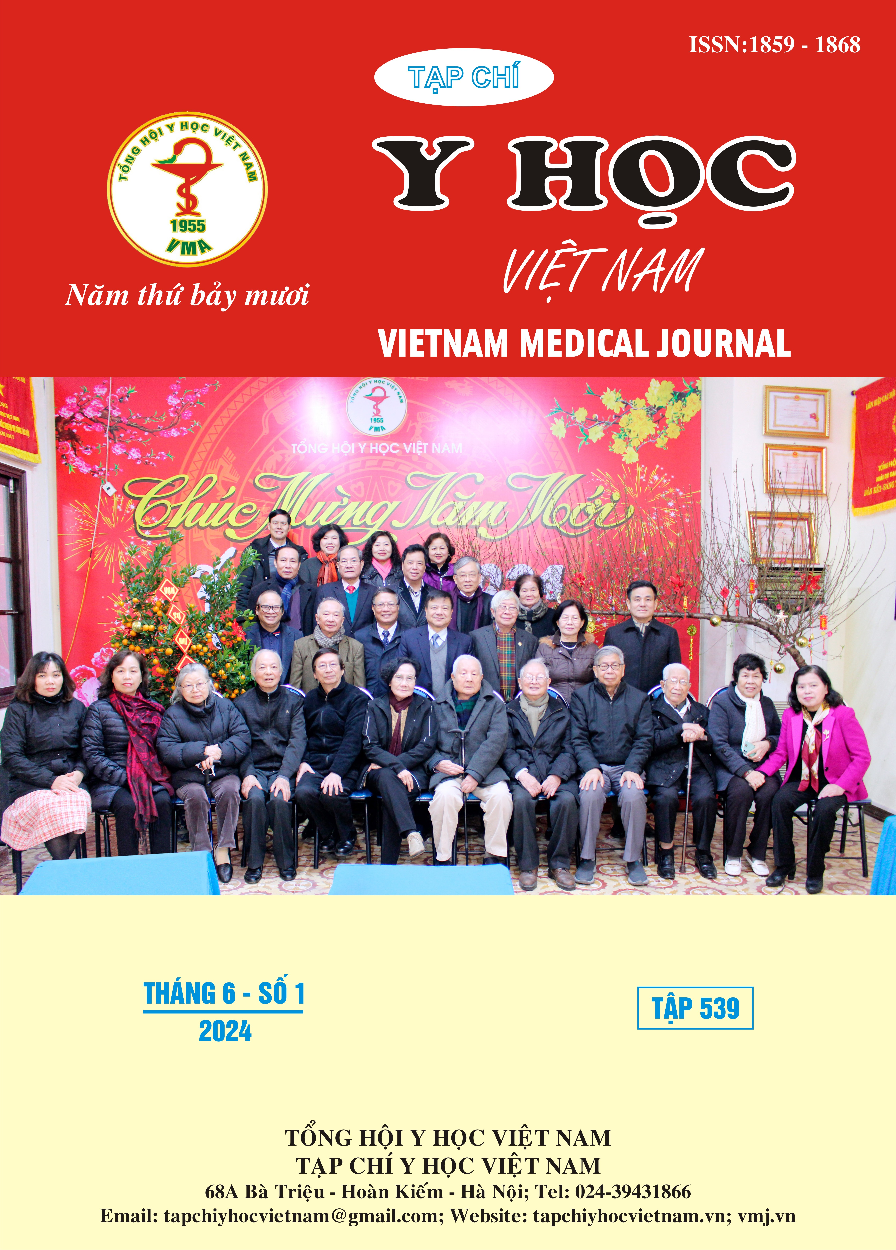OVERALL SURVIVAL TIME AND SOME PROGNOSTIC FACTORS OF PATIENTS WITH MELANOMA SKIN STAGE WITHOUT METASTASIS
Main Article Content
Abstract
Objectives: To evaluate overall survival time and some prognostic factors of patients with stage I, II, and III melanoma. Subjects and research methods: A cross-sectional descriptive study on cutaneous melanoma patients with stage I, II, and III skin cancer treated at Vietnam National Cancer Hospital from January 2018 to December 2021. Kaplan-Meier curves were used to estimate time overall survival (OS). The impact of baseline characteristics on OS was explored using multivariate Cox proportional hazard models. Results: 72,6% of patients received wide tumor resection and lymph node dissection, 25,0% had amputation/arthroplasty and lymph node dissection, and 2,4% of patients only received wide tumor resection or amputation. simple limb/disarticulation. 54,8% of patients did not have indications for adjuvant treatment after surgery (these patients were all in stages I and II), 10,7% of patients refused adjuvant treatment, and 22,6% of patients received treatment adjuvant chemotherapy, 11,9% of patients received adjuvant treatment with the immunotherapy drug pembrolizumab. The median overall survival time was 35,9 months, (95%CI is 28,7-43,1 months). Patients with tumor thickness T1-2, disease stage I-II, no tumor ulceration, no vascular invasion, no lymphocytic infiltration, and a mitotic ratio ≤ 6 have a higher overall survival time (p < 0,05). Among them, disease stage I-II and no vascular invasion are two factors that have independent prognostic value for overall survival. Conclusion: For patients with non-metastatic stage melanoma, surgery is the most important treatment method. The median overall survival time was 35,9 months, (95%CI is 28,7-43,1 months). Of which, disease stage I-II and no vascular invasion are two factors
Article Details
Keywords
Melanoma skin cancer, non-metastatic stage, overall survival time, prognostic factors
References
2. Phạm Hoàng Anh và cộng sự (1993), Ung thư Hà Nội 1991- 1992, Tạp chí y học Việt Nam; chuyên đề ung thư, tập 173, số 7, 14-21.
3. Marc Hurlbert (2020). 2020 Melanoma mortality rates decreasing despite ongoing increase in incidence—melanoma research Alliance.
4. Swetter SM, Bichakjian C, DiMaio D, Galan A, Kiuru M, Smith E. NCCN Guidelines Index Table of Contents Discussion. Published online 2023.
5. Vũ Thanh Phương. Đánh Giá Một Số Đặc Điểm Lâm Sàng, Cận Lâm Sàng và Kết Quả Phẫu Thuật Triệt Căn Ung Thư Hắc Tố Da Tại Bệnh Viện K. Luận văn thạc sỹ Y học. Đại học Y Hà Nội; 2013.
6. Phương VT. Nghiên cứu đặc điểm di căn hạch và kết quả điều trị ung thư hắc tố da giai đoạn II, III. Published online 2023.
7. Mandalà M, Imberti GL, Piazzalunga D, et al. Clinical and histopathological risk factors to predict sentinel lymph node positivity, disease-free and overall survival in clinical stages I-II AJCC skin melanoma: outcome analysis from a single-institution prospectively collected database. Eur J Cancer. 2009;45(14): 2537-2545. doi:10.1016/j.ejca.2009.05.034
8. Tas F, Erturk K. Histological lymphovascular invasion is associated with nodal involvement, recurrence, and survival in patients with cutaneous malignant melanoma. Int J Dermatol. 2017;56(2):166-170. doi:10.1111/ijd.13405


